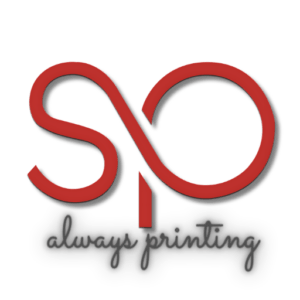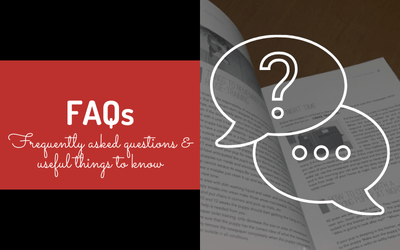Some frequently asked questions about the services we provide.
Frequently used terms in Litho Printing
| Prepress | Prepress refers to the production process before the job goes onto the machine to be printed. This typically refers to the process of using the artwork received and setting it up on the plate for the printing process. Our production director usually choses the layout that is used on the plate that is best suited to the type of printing and paper, as well as the easiest way the job can be finished. |
| Plates | This is the thin metal sheet that is used for the printing process. During the prepress process, the artwork is manipulated by separating the colours found in it and each colour is put on its own plate. For full colour artwork, it’s divided into cyan, magenta, yellow and black (CMYK). Once the paper sheet goes through all 4 colours, it produces the full colour printed sheet. |
| Artwork | Artwork is the term used for your design that needs to be printed. We only accept artwork in a PDF format. Its important that your artwork is designed for the size and colour that you require – if the design is not done properly or to size, once printed it can look pixalized (the colour/wording is not smooth), this commonly happens when you take a downloaded image and blow it up or if the text that needs to be printed is not in a solid colour. Please see more on question 2. |
| Make-ready | This is the process prior to the full on running of the job. The printer sets up the colours and plates to ensure that it is ready for the running process. |
| Register | Register refers to getting the plates aligned in the right positions on the machine to ensure the colour appears as it should. When we speak about register issues, its because a certain colour plate was 1mm off position which resulted in that colour being seen as slightly off the correct position it needed to be printed. Printers ensure register is correct during the make ready process. |
| Full Colour | Full colour refers to artwork that is designed in a CMYK colour setup., which refers to 4 colours namely cyan, magenta, yellow and black. |
| Spot Colour | Spot colour refers to 1 colour. This can be used if you have a design that only uses one colour throughout such as black. Or if it’s a special colour like a metallic, neon or pastel. Spot colours can also be added onto full colour artwork if necessary. This is generally done when the full colour artwork cannot produce the exact colour necessary as it will alter the other images on the design. |
| Finishing | Finishing refers to the processes that happen once the artwork has been printed. |
| Trimming | Trimming is part of the finishing process. This is when the printed sheet is cut down to the size that you have requested. Trimming refers to straight cuts. |
| Die Cutting | Die-cutting is another method of cutting down a job, but it is used when there is rounded corners, circles or if the design needs to be cut into a shape. For example, if you have a promotion in your shop and you want to have characters cut according to their shape, die-cutting is used for this process. |
| Mounting | Mounting refers to the finishing process of gluing a sheet of paper onto a thicker substrate like cardboard or chipboard. It’s especially useful for maintaining the life of a promotional item such as posters. |
| Stitching | Stitching refers to stapling booklets or leaflets. |
Why does my design look different when it’s printed compared to on my computer?
This can be slightly complicated answer, so take a breath while reading this! There are a few technicalities that need to be explained.
Computers have different colour settings that can be changed. Your settings may make things appear more contrasted or brighter, same like your TV settings.
The design of your artwork can be done through different design programs, all designers have their programs that they like and use. Some design programs have more functionality than others – this is especially true if you are designing your own artwork and you maybe use a free version rather than a paid version. Its important that when you are designing your artwork, you need to use a specific colour setting if you want to get your artwork printed as a litho job. For litho jobs, you need to use the CMYK colour setting. The CMYK setting on your colour may alter the colour to look very different from the RGB setting which looks more colour rich than the CMYK.
Here’s where it can become complicated – and please note, you do not have to specify this (ultimately, once we receive your artwork and we can see there may be issues with it, we will let you know!).
For CMYK artwork, generally there will be some sort of text on the design – sometimes, depending on the font and size of the print, the text may appear to have register issues however it’s because the fine font used is made up of 4 colours rather than just one colour. Now remember, CMYK is separated onto their own plates so when you have a text that is made up of a CMYK, it means that the text is separated into the CMYK colours. Some designers are very aware of this and ensure that the text is made of a solid black colour, rather than a black that has 5% cyan, 1% magenta and 94% black. Some colours cannot be broken down into a CMYK colour format that match the exact colour. In these cases, it’s best to use a spot colour for that specific colour.
This allows an exact Pantone (Pantone is the standardised system for colour reproduction) to be chosen produced as a separate ink which will match the colour.
Another factor to consider is the type of paper that you choose. Certain papers absorb more ink than others which results in a printed job that could look washed out or not as bright.
It’s important to note, that CMYK printing is much cheaper than printing with multiple spot colours.
What type of paper would best suit my job?
This depends on the artwork and the final use of the printed job. Generally art papers are used for most jobs due to their quality and how the finished product will look, art papers are coated papers that have a matt or gloss finish. This is suitable for posters, leaflets, brochures, magazines and most promotional items. The stock ranges from 100gsm to around 400gsm, but for posters most choose a 200 or 250gsm and for leaflets or brochures, most choose a 128-170gsm.
If you require a folder that will hold papers, a heavy stock of art paper is generally a good fit for this. Something like a 300 or 350gsm. If you need to write in the folders, then an uncoated stock such as an SBS or SBB board can be used which is a bleached white board.
Something like notepads will be printed on an uncoated stock of paper called bond or cartridge (better quality) that is the normal paper you use when printing documents in an office.
As mentioned before, the paper you choose can have an effect on your printed job. Think of the purpose of your print and the finish you want that will guide your decision.
As a summary, here’s a few examples:
| Finish | Type | Name | Weight | Purpose |
|---|---|---|---|---|
| Coated | Gloss or Matt | Art Paper | 90gsm to 350gsm | – Posters – Folders – Leaflets – Business Cards – Letterheads – Covers for Pads |
| Uncoated | Carbon Finish | Carbonless | 60gsm | – Receipt books – Pads or books that require a carbon back for multiple written copies |
| Colour Sheets | Tinted Bond | 80gsm or 160gsm | – Posters – Folders | |
| White Sheets | Bond | 70gsm to 90gsm | Notepads Letterheads Forms | |
| Cartridge | 90gsm to 140gsm | Notepads Letterheads Forms | ||
| Board | White Bristol | 160gsm to 240gsm | Posters Calendars Folders | |
| Tinted Bristol | 160gsm to 240gsm | Posters Calendars Folders | ||
| Kraft Liner (Brown/Kraft Sheets) | 170gsm to 235gsm | Posters Calendars Folders | ||
| Greyback (White side & Kraft side) | 300-350gsm | Posters Calendars Folders Packaging Boxes | ||
| Greychip Board | 380gsm to 2000gsm + | Mounting Backing board for pads | ||
| SBS/SBB/FBB (Sulphate boards) | 215gsm to 350gsm | Boxes Packaging Promo items |
Can you give me an example of the types of finishing that could be applied to my job?
You can also head over to our page that gives an overview of these finishing types as well as some images.
Laminating
A film is applied over the sheet (gloss or matt). It can be done one side or both sides of the sheet. This can be done when you want a certain finish or for durability.
Encapsulating
Encapsulating is similar to laminating but there is a lip that goes around the area. For example, driver’s license has this done. You can have a matt or gloss encapsulation.
Spot UV Varnish
Only a certain area of the printed sheet will have a laminate applied over it. This can either be gloss or matt. It’s useful for highlighting certain colours or text.
Foiling
A process of putting a colour like gold or silver over wording that allows it to appear shiny.
Embossing/Debossing
The process of either having text or an image pressed down into the sheet or pressed up for a textured finish.
This is just some of the more common finishes that can be applied to your print. If you have an idea for finishing, speak to us and we can advise you.
Why is litho printing so expensive?
Due to the process involved in litho, it is more expensive than digital printing depending on what is required.
This is due to cost factors such as the amount of plates required, the size of the job, the quantity needed, the paper required, the labour costs and finishing costs.
We can control certain aspects of the pricing but there are other elements out of our control such as the cost for paper which is determined by shipping & exchange rates or the costs we get from our suppliers for finishing.
We will always get the best pricing that we are able to provide and we are always open to negotiation and discussions regarding budget!
Can you deliver directly to my client?
Yes we can! Let us know where and when. If the destination is outside of Cape Town (±50km), we can arrange a courier for you and include this in your quotation.
Do you offer design services?
Yes we do! We have an in-house designer that can assist you with your artwork, send us a quote request and we’ll be happy to assist and take it from there. We generally ask for your artwork to come print ready in a PDF format. If there are minor changes that need to be done to your artwork, we can do that free of charge.

